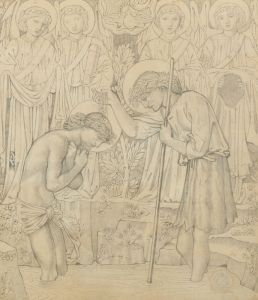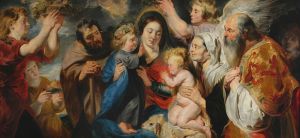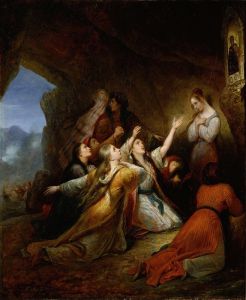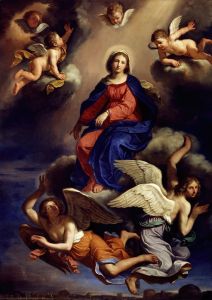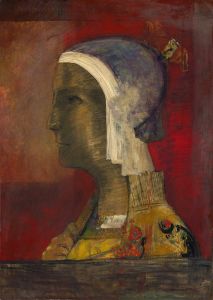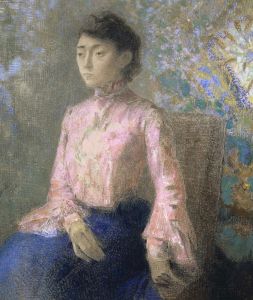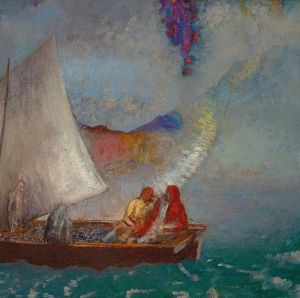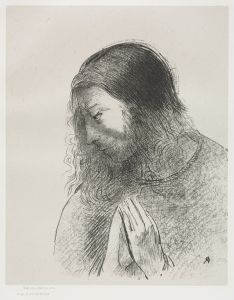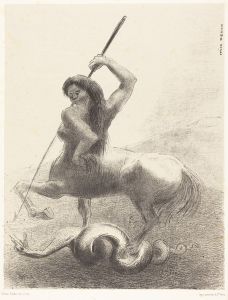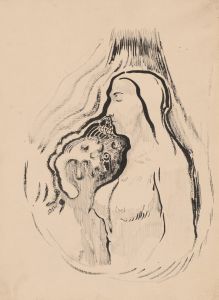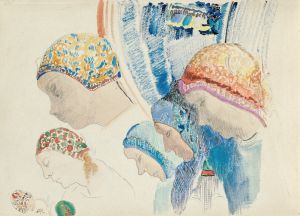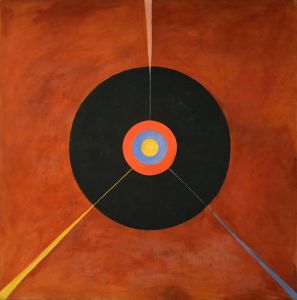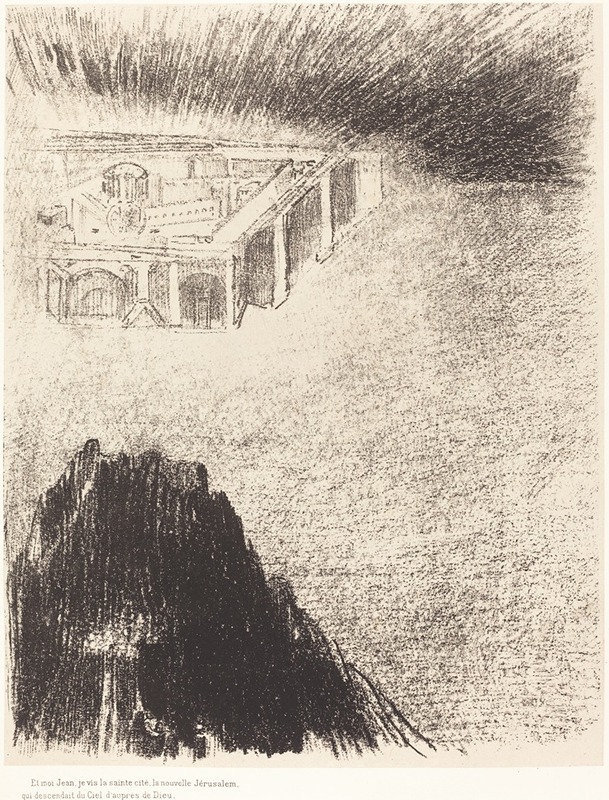
Et moi, Jean, Je vis la sainte cite, la nouvelle Jerusalem, qui descendait du ciel, d’aupres de dieu
A hand-painted replica of Odilon Redon’s masterpiece Et moi, Jean, Je vis la sainte cite, la nouvelle Jerusalem, qui descendait du ciel, d’aupres de dieu, meticulously crafted by professional artists to capture the true essence of the original. Each piece is created with museum-quality canvas and rare mineral pigments, carefully painted by experienced artists with delicate brushstrokes and rich, layered colors to perfectly recreate the texture of the original artwork. Unlike machine-printed reproductions, this hand-painted version brings the painting to life, infused with the artist’s emotions and skill in every stroke. Whether for personal collection or home decoration, it instantly elevates the artistic atmosphere of any space.
Odilon Redon was a French symbolist artist known for his unique and imaginative works that often explored themes of dreams, spirituality, and the subconscious. One of his notable works is "Et moi, Jean, Je vis la sainte cite, la nouvelle Jerusalem, qui descendait du ciel, d’aupres de dieu," which translates to "And I, John, saw the holy city, the new Jerusalem, coming down from God out of heaven." This piece is part of Redon's broader exploration of religious and mystical themes, drawing inspiration from biblical texts and visions.
Redon was born on April 20, 1840, in Bordeaux, France, and his early life was marked by ill health, which led him to spend much of his childhood in solitude. This isolation fostered his vivid imagination, which later became a hallmark of his artistic style. He initially trained as an architect but soon turned to painting and drawing, studying under Jean-Léon Gérôme and later under Rodolphe Bresdin, who introduced him to etching and lithography.
The painting "Et moi, Jean, Je vis la sainte cite, la nouvelle Jerusalem, qui descendait du ciel, d’aupres de dieu" is a reflection of Redon's fascination with the mystical and the divine. The title itself is a direct reference to the Book of Revelation in the New Testament, where the Apostle John describes his vision of the New Jerusalem descending from heaven. This biblical imagery provided a rich source of inspiration for Redon, who often sought to depict the unseen and the otherworldly in his art.
Redon's work is characterized by its use of vibrant colors and dreamlike compositions, which set him apart from many of his contemporaries. In this particular piece, he likely employed his signature pastel technique, which allowed him to create luminous and ethereal effects. The painting is a testament to Redon's ability to blend religious iconography with his own imaginative vision, resulting in a work that is both spiritually evocative and visually striking.
Throughout his career, Redon was associated with the Symbolist movement, which emphasized the expression of ideas and emotions over realistic representation. His work often featured fantastical creatures, mythical landscapes, and religious motifs, all rendered in a style that was uniquely his own. Redon's interest in spirituality and the metaphysical was not limited to Christianity; he also drew inspiration from Eastern religions, philosophy, and literature.
Redon's influence extended beyond his lifetime, impacting later artists and movements, including the Surrealists, who admired his ability to convey the inner workings of the mind through art. His work continues to be celebrated for its originality and depth, offering viewers a glimpse into a world where the boundaries between reality and imagination are blurred.
While specific details about the creation and exhibition history of "Et moi, Jean, Je vis la sainte cite, la nouvelle Jerusalem, qui descendait du ciel, d’aupres de dieu" may not be extensively documented, the painting remains an important part of Redon's oeuvre, exemplifying his skill in merging the mystical with the artistic.





